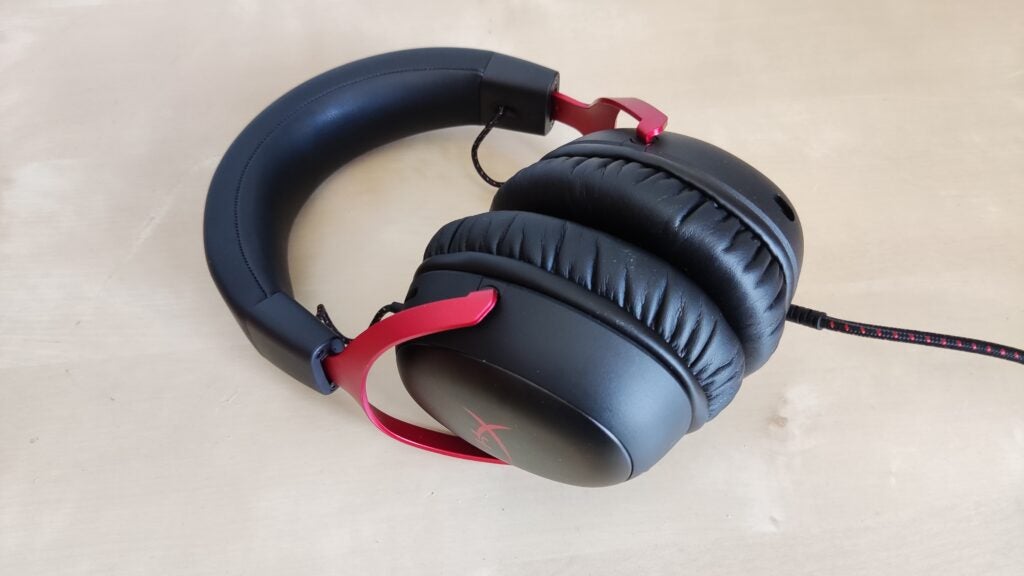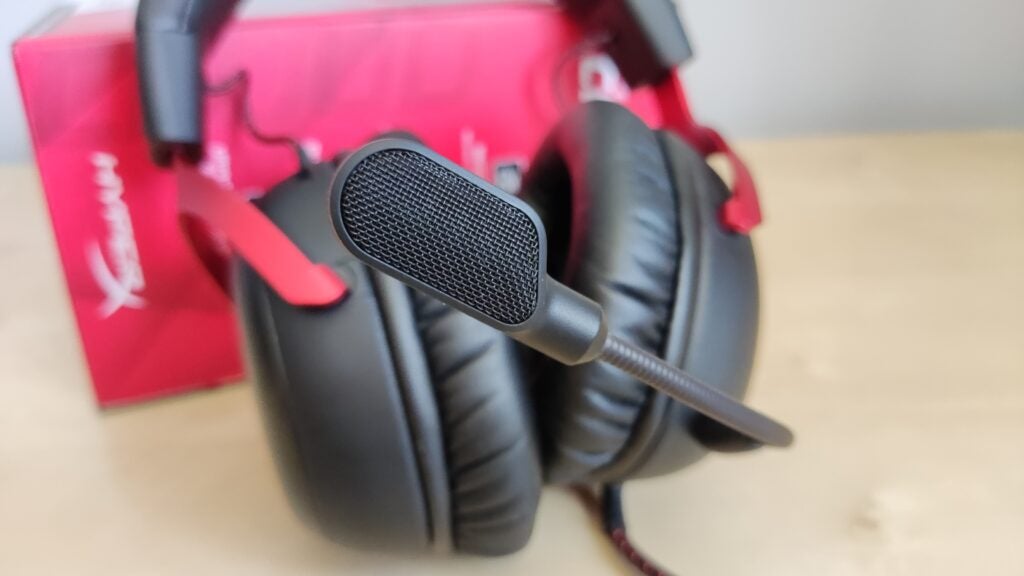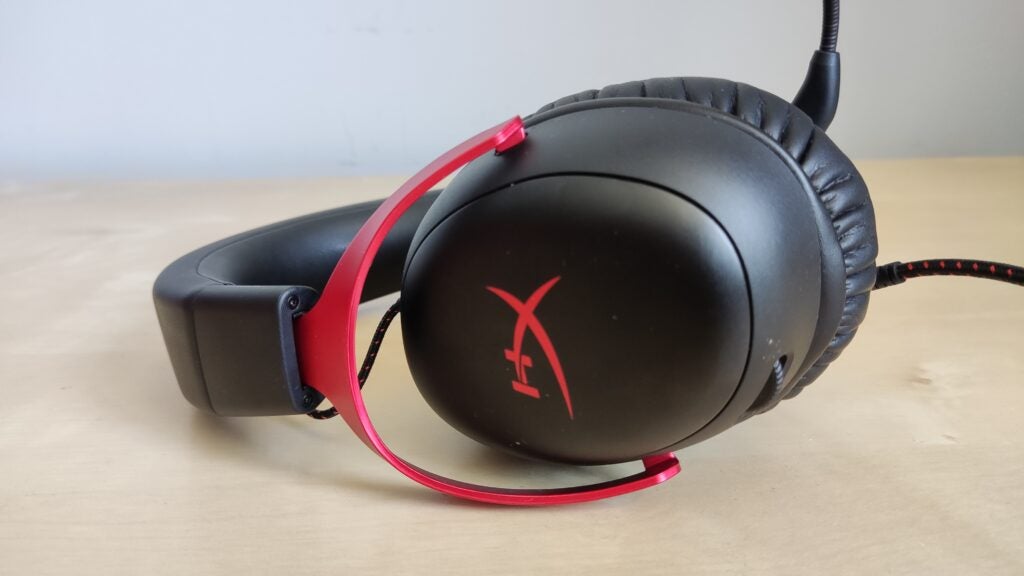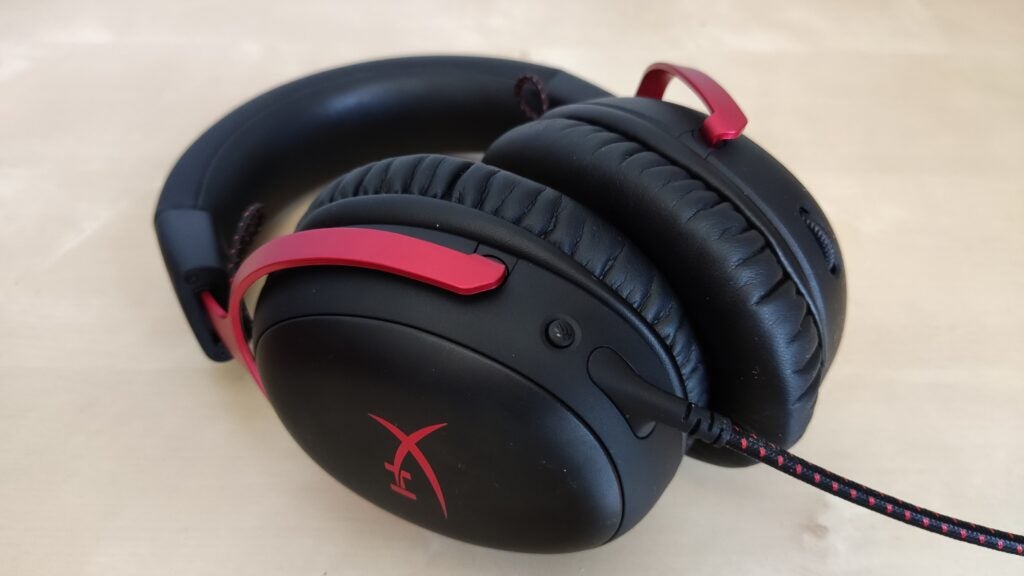Verdict
An incredibly comfortable headset with a surprisingly crisp microphone, the HyperX Cloud III is a reliable, no-frills option for PC and consoles. But, with a hefty price bump and the Cloud Alpha offering better audio at the same price, it’s not the instant hit it could have been.
Pros
- Incredibly comfortable
- Full platform compatibility
- Solid microphone
Cons
- Pricier than its predecessor
- Can’t match the Cloud Alpha’s bass
- Basic audio performance
Availability
- UKRRP: £99.99
- USARRP: $99.99
- Europeunavailable
- Canadaunavailable
- Australiaunavailable
Introduction
There’s a lot to love about the HyperX Cloud III. A $99/£99 headset that’s no slouch in the audio department and as comfortable as mid-range headsets come, it’s a slight but welcome improvement on the HyperX Cloud II that impressed us several years ago.
Yet that might not be enough. With the HyperX Cloud Alpha and Razer BlackShark V2 already pulling their weight at this price point, and the Cloud III launching with a $25/£25 price bump on its predecessor, it isn’t quite the market leader HyperX would have you believe. It’s a good headset, certainly, but isn’t significantly superior to what’s already out there.
Design and features
- Detachable mic arm
- Aluminium frame
- Comfortably chunky padding
A fully wired headset with a detachable mic arm and aluminium frame, the HyperX Cloud III closely matches the design of the Cloud II. HyperX has made only a few changes: the plastic moulding at the base of the mic arm, for one, is much slimmer, and the metal forks connecting the ear cups to the headband are less bulky. It’s sleeker all around, and with the mute-microphone button now sitting on the left ear cup and the volume wheel on the right (rather than both assigned to a separate dongle as before), it’s that much more user-friendly.

Comfort is the big sell design-wise. The ear cups have chunky, soft padding and the leatherette headband didn’t get too hot even after extended gaming sessions. It’s also one of the more generous adjustable headbands I’ve used, stretching from a super-tight grip for the tiniest heads, to impressively wide for those with the biggest noggins. If you’re the kind of person that’s very fussy about what goes over your ears, this headset will likely see you right.
It connects through a standard 3.5mm jack but comes packed alongside a USB-C converter cable and a USB-C to USB-A adapter. That means it’s compatible with just about anything you’d want to use it with: PC, Xbox Series X, PS5 or Nintendo Switch. It doesn’t, however, come with a dual-jack extension for connecting to the front of your PC (meaning you’ll need to use the USB extender) nor a carry case as its predecessor does. Not that that’s much of an omission. How often do you actually want to stuff your headset in a flimsy nylon bag?

And that’s your lot. No audio profiles or adjustable EQ. As you might expect for a headset at this price, it’s truly plug-and-play. On the one hand, that takes out all the faff. Conversely, those who love to precisely customise sound profiles for an exact mix won’t be able to play.
Audio and microphone
- Excellent microphone
- Redesigned 53mm drivers
Like the BlackShark V2 Pro 2023, the HyperX Cloud III has one standout feature: its microphone. While it doesn’t come close to matching the quality of Razer’s premium headset, it’s clear, crisp and free from the background hum that other headsets around this price often fall foul to. Its in-built pop filter, new for this model, also nicely eliminates all the plosive feedback I throw at it. You wouldn’t want to use it for any serious amount of streaming or broadcasting, but for chatting to friends while gaming, it ticks all the right boxes.

The audio performance of the cans, meanwhile, is a little more pedestrian. It’s sufficiently wide for closed-back headphones, with well-supported high frequencies and boosted bass. Monsters in Diablo IV squelch in all the right ways, and the subtle environmental audio effects in Apex Legend come through clearly. The Cloud III apparently uses redesigned versions of the 53mm drivers found in the Cloud II, though you’d be hard-pressed to tell. HyperX claims they’re an improvement, but I found them much of a muchness, and not nearly as notable a change as the newer microphone.
But it’s more seriously overshadowed by the HyperX Cloud Alpha. It can’t compete with the wonderfully grumbly tones of that headset, with its dual-chamber drivers separating the bass from the mids and highs to make lower pitches sing. The bass response on the Cloud III is fine enough and perfectly serviceable – but that’s it. That’s a bit of shame, given the bass tones are where the audio capabilities of games often really come alive.

The knock-on effect of that is it limits the headset’s potential usage outside of games. Don’t expect the Cloud III to double as your go-to pair of music cans, despite what the detachable mice arm might suggest unless you particularly like tinny pop. Its soundstage is too narrow for anything beyond casual music listening.
Latest deals
Should you buy it?
You want comfort and a solid microphone
The HyperX Cloud III is one comfy headset, and while its audio output might be nothing to rave about, its mic is fabulous.
You want to save some money
The cheaper Cloud II still holds its own, and the Cloud Alpha even surpasses Cloud III in some areas. Newer isn’t always better.
Final Thoughts
The HyperX Cloud III will undoubtedly serve you well. It’s sleek, comfortable, offers solid if uninspired audio performance, and surprisingly robust microphone quality. If you want the latest no-frills, reliable headset, it will do you well.
But cast the net further, even just a short distance to past HyperX releases, and things get muddier. The HyperX Cloud Alpha has a far richer bass response, a still fantastic microphone, and is comfortable as you want – all for the same price. The Cloud Alpha Wireless, and its superb battery life, can also now be picked up for around £30 more than this headset, making it an even tougher sell.
If sleek design and comfort are a priority, get the Cloud III. Otherwise, HyperX’s past models already have you covered.
How we test
We use every headset we test for at least a week. During that time, we’ll check it for ease of use and put it through its paces by using it in a variety of games, as well as playing music in order to get the full experience.
We also check each headset’s software (if applicable) to see how easy it is to customise and set up.
FAQs
There are several slight differences between them, but the main improvements offered by the HyperX Cloud III are a sleeker design, redesigned drivers and a higher-quality mic.
The headset’s microphone supports noise-cancelling that’s designed to pick up your voice while ignoring background noise.
Verdict
An incredibly comfortable headset with a surprisingly crisp microphone, the HyperX Cloud III is a reliable, no-frills option for PC and consoles. But, with a hefty price bump and the Cloud Alpha offering better audio at the same price, it’s not the instant hit it could have been.
Pros
- Incredibly comfortable
- Full platform compatibility
- Solid microphone
Cons
- Pricier than its predecessor
- Can’t match the Cloud Alpha’s bass
- Basic audio performance
Availability
- UKRRP: £99.99
- USARRP: $99.99
- Europeunavailable
- Canadaunavailable
- Australiaunavailable
Introduction
There’s a lot to love about the HyperX Cloud III. A $99/£99 headset that’s no slouch in the audio department and as comfortable as mid-range headsets come, it’s a slight but welcome improvement on the HyperX Cloud II that impressed us several years ago.
Yet that might not be enough. With the HyperX Cloud Alpha and Razer BlackShark V2 already pulling their weight at this price point, and the Cloud III launching with a $25/£25 price bump on its predecessor, it isn’t quite the market leader HyperX would have you believe. It’s a good headset, certainly, but isn’t significantly superior to what’s already out there.
Design and features
- Detachable mic arm
- Aluminium frame
- Comfortably chunky padding
A fully wired headset with a detachable mic arm and aluminium frame, the HyperX Cloud III closely matches the design of the Cloud II. HyperX has made only a few changes: the plastic moulding at the base of the mic arm, for one, is much slimmer, and the metal forks connecting the ear cups to the headband are less bulky. It’s sleeker all around, and with the mute-microphone button now sitting on the left ear cup and the volume wheel on the right (rather than both assigned to a separate dongle as before), it’s that much more user-friendly.

Comfort is the big sell design-wise. The ear cups have chunky, soft padding and the leatherette headband didn’t get too hot even after extended gaming sessions. It’s also one of the more generous adjustable headbands I’ve used, stretching from a super-tight grip for the tiniest heads, to impressively wide for those with the biggest noggins. If you’re the kind of person that’s very fussy about what goes over your ears, this headset will likely see you right.
It connects through a standard 3.5mm jack but comes packed alongside a USB-C converter cable and a USB-C to USB-A adapter. That means it’s compatible with just about anything you’d want to use it with: PC, Xbox Series X, PS5 or Nintendo Switch. It doesn’t, however, come with a dual-jack extension for connecting to the front of your PC (meaning you’ll need to use the USB extender) nor a carry case as its predecessor does. Not that that’s much of an omission. How often do you actually want to stuff your headset in a flimsy nylon bag?

And that’s your lot. No audio profiles or adjustable EQ. As you might expect for a headset at this price, it’s truly plug-and-play. On the one hand, that takes out all the faff. Conversely, those who love to precisely customise sound profiles for an exact mix won’t be able to play.
Audio and microphone
- Excellent microphone
- Redesigned 53mm drivers
Like the BlackShark V2 Pro 2023, the HyperX Cloud III has one standout feature: its microphone. While it doesn’t come close to matching the quality of Razer’s premium headset, it’s clear, crisp and free from the background hum that other headsets around this price often fall foul to. Its in-built pop filter, new for this model, also nicely eliminates all the plosive feedback I throw at it. You wouldn’t want to use it for any serious amount of streaming or broadcasting, but for chatting to friends while gaming, it ticks all the right boxes.

The audio performance of the cans, meanwhile, is a little more pedestrian. It’s sufficiently wide for closed-back headphones, with well-supported high frequencies and boosted bass. Monsters in Diablo IV squelch in all the right ways, and the subtle environmental audio effects in Apex Legend come through clearly. The Cloud III apparently uses redesigned versions of the 53mm drivers found in the Cloud II, though you’d be hard-pressed to tell. HyperX claims they’re an improvement, but I found them much of a muchness, and not nearly as notable a change as the newer microphone.
But it’s more seriously overshadowed by the HyperX Cloud Alpha. It can’t compete with the wonderfully grumbly tones of that headset, with its dual-chamber drivers separating the bass from the mids and highs to make lower pitches sing. The bass response on the Cloud III is fine enough and perfectly serviceable – but that’s it. That’s a bit of shame, given the bass tones are where the audio capabilities of games often really come alive.

The knock-on effect of that is it limits the headset’s potential usage outside of games. Don’t expect the Cloud III to double as your go-to pair of music cans, despite what the detachable mice arm might suggest unless you particularly like tinny pop. Its soundstage is too narrow for anything beyond casual music listening.
Latest deals
Should you buy it?
You want comfort and a solid microphone
The HyperX Cloud III is one comfy headset, and while its audio output might be nothing to rave about, its mic is fabulous.
You want to save some money
The cheaper Cloud II still holds its own, and the Cloud Alpha even surpasses Cloud III in some areas. Newer isn’t always better.
Final Thoughts
The HyperX Cloud III will undoubtedly serve you well. It’s sleek, comfortable, offers solid if uninspired audio performance, and surprisingly robust microphone quality. If you want the latest no-frills, reliable headset, it will do you well.
But cast the net further, even just a short distance to past HyperX releases, and things get muddier. The HyperX Cloud Alpha has a far richer bass response, a still fantastic microphone, and is comfortable as you want – all for the same price. The Cloud Alpha Wireless, and its superb battery life, can also now be picked up for around £30 more than this headset, making it an even tougher sell.
If sleek design and comfort are a priority, get the Cloud III. Otherwise, HyperX’s past models already have you covered.
How we test
We use every headset we test for at least a week. During that time, we’ll check it for ease of use and put it through its paces by using it in a variety of games, as well as playing music in order to get the full experience.
We also check each headset’s software (if applicable) to see how easy it is to customise and set up.
FAQs
There are several slight differences between them, but the main improvements offered by the HyperX Cloud III are a sleeker design, redesigned drivers and a higher-quality mic.
The headset’s microphone supports noise-cancelling that’s designed to pick up your voice while ignoring background noise.

























